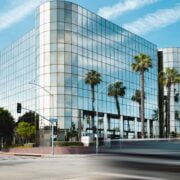
From Page to Screen: Film Adaptations of Beloved Books
Adapting books into films is a delicate art that requires a careful balance between staying true to the source material and making it visually appealing for the screen. The process involves taking a beloved book and transforming it into a cinematic experience that captures the essence of the story while also appealing to a wider audience. It is a challenging task that requires a deep understanding of both mediums and a keen eye for storytelling.
When adapting a book into a film, it is important to preserve the essence of the story and the characters that readers have come to love. However, it is equally important to make the necessary changes to ensure that the story translates well on screen. This often involves condensing the narrative, combining or eliminating characters, and making other adjustments to fit the constraints of a two-hour film. The goal is to create a faithful adaptation that captures the spirit of the book while also making it accessible and engaging for a visual medium.
Key Takeaways
- Adapting books into films is an art that requires careful consideration and planning.
- Adapting beloved books into films presents unique challenges, such as staying true to the source material while also making it accessible to a wider audience.
- Iconic film adaptations of classic novels, such as “Gone with the Wind” and “To Kill a Mockingbird,” have become cultural touchstones.
- The screenplay plays a crucial role in adapting books into films, as it must condense and translate the story into a visual medium.
- The visual interpretation of beloved books on screen can be both exciting and daunting, as filmmakers must balance their own creative vision with the expectations of fans.
The Challenges of Adapting Beloved Books into Films
Adapting beloved books into films comes with its own set of challenges. There is often immense pressure to stay true to the source material while also making it accessible to a wider audience. Fans of the book have certain expectations and are often critical of any changes made in the adaptation process. Striking a balance between staying faithful to the book and making it appealing to a broader audience can be a daunting task for filmmakers.
One example of a book that was difficult to adapt into a film is J.R.R. Tolkien’s “The Lord of the Rings” trilogy. The epic fantasy series is beloved by millions of readers around the world, and adapting such an expansive and complex story into a film was no easy feat. Director Peter Jackson faced numerous challenges in condensing the narrative, capturing the vastness of Middle-earth, and bringing Tolkien’s richly imagined characters to life on screen. However, Jackson’s adaptation was widely praised for its faithfulness to the source material and its stunning visual effects.
Another example is F. Scott Fitzgerald’s “The Great Gatsby.” The novel is considered a classic of American literature, and its adaptation into a film has been attempted multiple times. However, capturing the essence of Fitzgerald’s prose and the decadence of the Jazz Age on screen proved to be a challenge. While some adaptations have been praised for their visual style, they have also been criticized for not fully capturing the depth and complexity of the characters and themes in the book.
Iconic Film Adaptations of Classic Novels
Despite the challenges, there have been many successful film adaptations of classic novels that have captured the hearts of audiences around the world. One such example is Jane Austen’s “Pride and Prejudice.” The 2005 film adaptation, directed by Joe Wright and starring Keira Knightley as Elizabeth Bennet, was praised for its faithful portrayal of Austen’s beloved characters and its stunning cinematography. The film successfully brought the world of Regency England to life on screen while also appealing to a modern audience.
Another iconic film adaptation is Harper Lee’s “To Kill a Mockingbird.” The 1962 film, directed by Robert Mulligan and starring Gregory Peck as Atticus Finch, is widely regarded as one of the greatest adaptations of all time. The film captured the heart-wrenching story of racial injustice in the Deep South with sensitivity and grace, earning critical acclaim and multiple Academy Awards.
What made these adaptations successful was their ability to capture the essence of the books while also making them visually compelling. The filmmakers understood the importance of staying true to the source material and preserving the themes and characters that made the books so beloved. They also made creative choices that enhanced the storytelling and brought a fresh perspective to the stories.
The Role of Screenplay in Adapting Books into Films
| Metrics | Description |
|---|---|
| Box Office Revenue | The amount of money a film adaptation of a book makes in theaters |
| Critical Reception | The reviews and ratings given by film critics to the screenplay and overall adaptation |
| Faithfulness to the Source Material | How closely the screenplay follows the plot, characters, and themes of the original book |
| Character Development | The depth and complexity of the characters in the screenplay and how they compare to the book |
| Dialogue | The quality and effectiveness of the dialogue in conveying the story and characters |
| Adaptation Choices | The decisions made by the screenwriter and director in adapting the book to film, such as changes to the ending or combining characters |
A well-written screenplay is crucial in the process of adapting books into films. The screenplay serves as the blueprint for the film, guiding the director, actors, and crew in bringing the story to life on screen. It is the bridge between the written word and the visual medium, and a poorly written screenplay can make or break an adaptation.
One of the challenges of adapting a book into a screenplay is condensing the narrative. Books often have complex plots and multiple storylines that need to be streamlined for a two-hour film. This requires making difficult choices about what to include and what to leave out, while still maintaining the integrity of the story. A well-written screenplay can effectively distill the essence of a book into a concise and engaging narrative that captures the spirit of the original work.
Another challenge is capturing the voice of the characters. In a book, readers have access to the inner thoughts and emotions of the characters, but in a film, this needs to be conveyed through dialogue, action, and visual storytelling. A skilled screenwriter can capture the essence of a character’s voice and translate it onto the screen, creating memorable and compelling performances.
The Visual Interpretation of Beloved Books on Screen
Visual interpretation plays a crucial role in film adaptations of beloved books. While books rely on words to create images in the reader’s mind, films have the advantage of using visuals to bring stories to life. A successful adaptation is able to capture the essence of the book through visual storytelling, creating a cinematic experience that resonates with audiences.
One example of a film that successfully captured the essence of a book through visual interpretation is Ang Lee’s adaptation of Yann Martel’s “Life of Pi.” The novel tells the story of a young Indian boy named Pi who survives a shipwreck and finds himself stranded on a lifeboat with a Bengal tiger named Richard Parker. The film used stunning visual effects to bring the story to life, capturing the beauty and wonder of the ocean and the bond between Pi and Richard Parker. The film’s breathtaking visuals enhanced the storytelling and created a truly immersive experience for audiences.
Another example is Baz Luhrmann’s adaptation of F. Scott Fitzgerald’s “The Great Gatsby.” While the film received mixed reviews for its storytelling, it was widely praised for its visual style. Luhrmann’s use of vibrant colors, elaborate costumes, and lavish sets captured the opulence and decadence of the Jazz Age, creating a visually stunning interpretation of Fitzgerald’s novel.
The Importance of Casting in Film Adaptations of Books

Casting plays a crucial role in bringing characters to life on screen in film adaptations of books. The right actor can embody the essence of a character and bring depth and nuance to their performance, while the wrong casting choice can detract from the story and leave audiences feeling disconnected.
One example of successful casting in a film adaptation is Daniel Radcliffe as Harry Potter in the “Harry Potter” series. Radcliffe was cast as the iconic boy wizard at the age of 11 and grew up alongside his character over the course of eight films. His portrayal of Harry Potter captured the vulnerability, bravery, and determination of the character, earning him praise from both fans and critics.
On the other hand, there have been instances where casting choices in film adaptations have been met with criticism. One example is Tom Cruise as Lestat de Lioncourt in “Interview with the Vampire.” In Anne Rice’s novel, Lestat is described as tall, blond, and charismatic, while Cruise is known for his dark hair and shorter stature. The casting choice was met with skepticism from fans of the book, who felt that Cruise did not match their vision of the character.
The Impact of Film Adaptations on the Popularity of Books
Film adaptations have the power to increase the popularity of books by introducing them to a wider audience. When a beloved book is adapted into a successful film, it can generate renewed interest in the source material and attract new readers.
One example of a book that gained popularity after being adapted into a film is Suzanne Collins’ “The Hunger Games.” The dystopian novel was already popular among young adult readers, but the film adaptation starring Jennifer Lawrence as Katniss Everdeen brought the story to a wider audience. The success of the film franchise led to increased sales of the books and sparked a cultural phenomenon.
Another example is J.K. Rowling’s “Harry Potter” series. While the books were already bestsellers before the film adaptations, the success of the films helped to solidify the series as a cultural phenomenon. The films introduced millions of viewers to the magical world of Hogwarts and inspired a new generation of readers.
The Differences between Books and Films: A Comparative Analysis
Books and films are two distinct mediums with their own advantages and disadvantages. While books rely on words to create images in the reader’s mind, films have the advantage of using visuals, music, and sound to bring stories to life. Each medium has its own strengths and limitations, and adapting a book into a film requires understanding and navigating these differences.
One advantage of books is their ability to delve deep into a character’s thoughts and emotions. Through internal monologues and descriptive prose, readers gain insight into a character’s inner world. Films, on the other hand, rely on visual storytelling and external cues to convey emotions and motivations. This can be both a challenge and an opportunity for filmmakers, as they must find creative ways to capture the essence of a character without relying on internal dialogue.
Another difference between books and films is their pacing. Books have the luxury of taking their time to develop characters and build suspense, while films are often constrained by their running time. This requires filmmakers to make choices about what to include and what to leave out, condensing the narrative and streamlining the story for a two-hour film. While this can be challenging, it also forces filmmakers to focus on the most essential elements of the story and create a tight and engaging narrative.
The Future of Film Adaptations of Beloved Books
In the age of streaming services and digital media, the future of film adaptations of beloved books is evolving. With the rise of platforms like Netflix, Amazon Prime, and Hulu, there are more opportunities for books to be adapted into films or television series. This opens up new possibilities for storytelling and allows for more in-depth adaptations that can explore the nuances of a book in greater detail.
One prediction for the future of film adaptations is an increase in diverse stories and voices. As audiences demand more representation and inclusivity in media, there is a growing interest in adapting books by marginalized authors and telling stories from underrepresented perspectives. This shift in focus has the potential to bring a wider range of stories to the screen and introduce audiences to new voices and experiences.
Another prediction is an increase in interactive storytelling. With advancements in technology, filmmakers have the opportunity to create immersive experiences that blur the line between film and video games. This could involve interactive elements that allow viewers to make choices that affect the outcome of the story or virtual reality experiences that transport audiences into the world of the book.
The Enduring Power of Books and Films
In conclusion, adapting books into films is a challenging but rewarding process that requires a delicate balance between staying true to the source material and making it visually appealing for the screen. The success of a film adaptation depends on many factors, including a well-written screenplay, visual interpretation, casting choices, and capturing the essence of the book while also appealing to a wider audience.
Despite their differences, both books and films have an enduring power in storytelling. Books have the ability to transport readers to different worlds and immerse them in the inner thoughts and emotions of characters, while films have the advantage of using visuals, music, and sound to create a cinematic experience. When done well, film adaptations can introduce a wider audience to the magic of books and increase their popularity.
As technology continues to evolve and new platforms emerge, the future of film adaptations is constantly evolving. Whether it’s through streaming services, interactive storytelling, or other innovations, the art of adapting books into films will continue to captivate audiences and bring beloved stories to life on screen.
FAQs
What are film to book adaptations?
Film to book adaptations are movies that are based on books or novels. These adaptations involve the process of transforming a written work into a visual medium.
Why are books adapted into movies?
Books are adapted into movies because they have a built-in audience and a pre-existing story that can be translated into a visual medium. Additionally, movies can reach a wider audience and generate more revenue than books alone.
What are some popular film to book adaptations?
Some popular film to book adaptations include “The Lord of the Rings,” “Harry Potter,” “The Hunger Games,” “The Fault in Our Stars,” and “Gone Girl.”
What are some challenges in adapting a book into a movie?
Some challenges in adapting a book into a movie include condensing the story into a shorter format, staying true to the source material, and capturing the essence of the characters and setting.
What are some benefits of adapting a book into a movie?
Some benefits of adapting a book into a movie include reaching a wider audience, generating more revenue, and bringing the story to life in a visual medium.
What are some differences between the book and movie versions of a story?
Some differences between the book and movie versions of a story include changes to the plot, characters, and setting. Additionally, movies may omit or add certain scenes or characters for the sake of time or visual appeal.


















